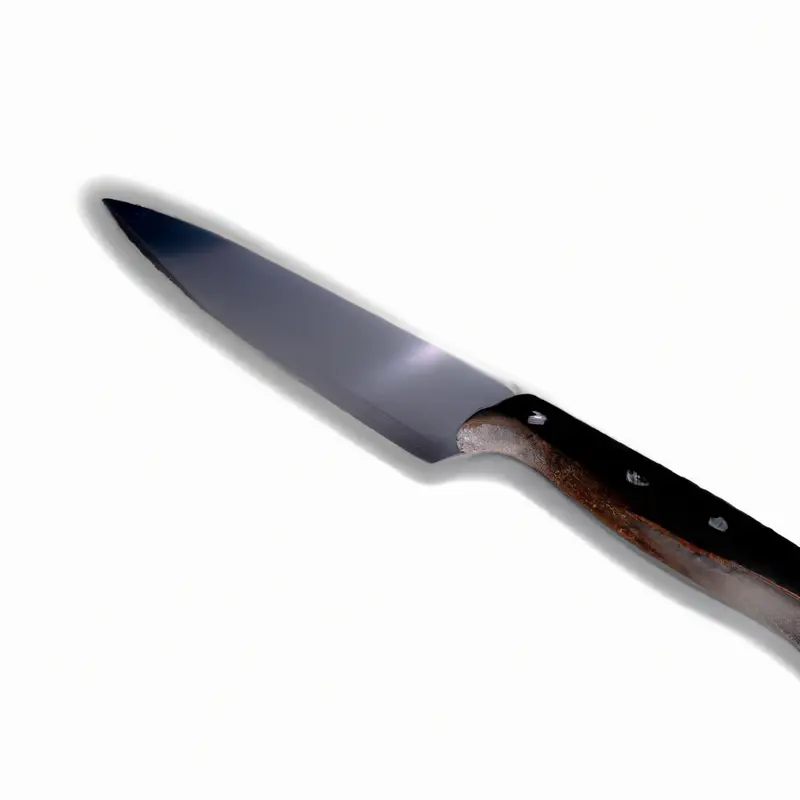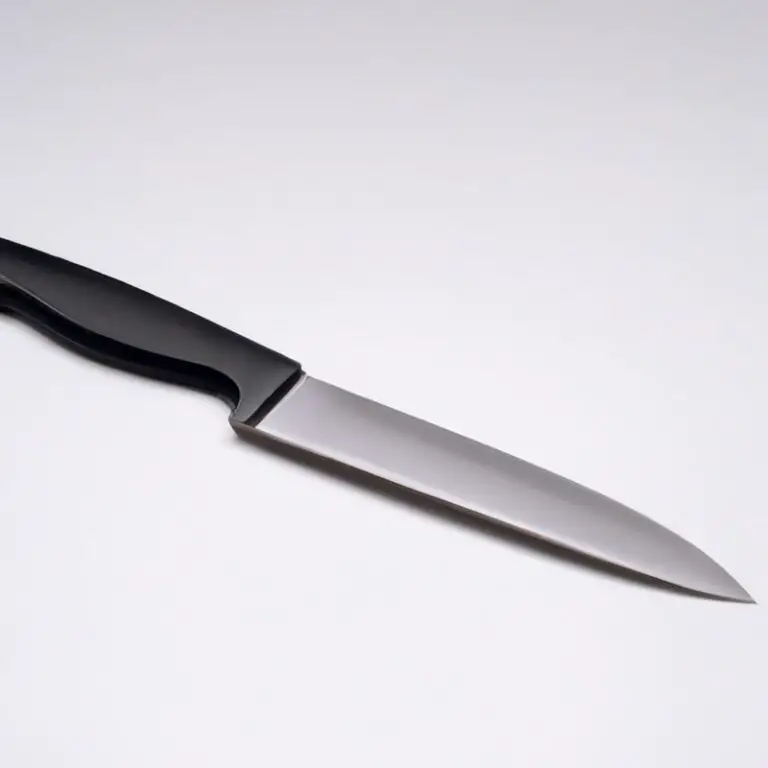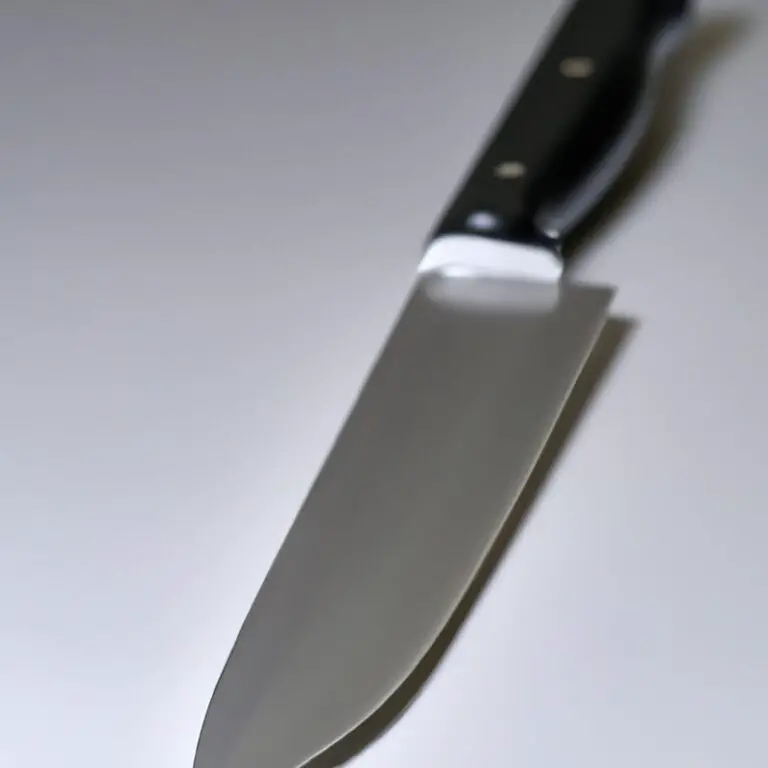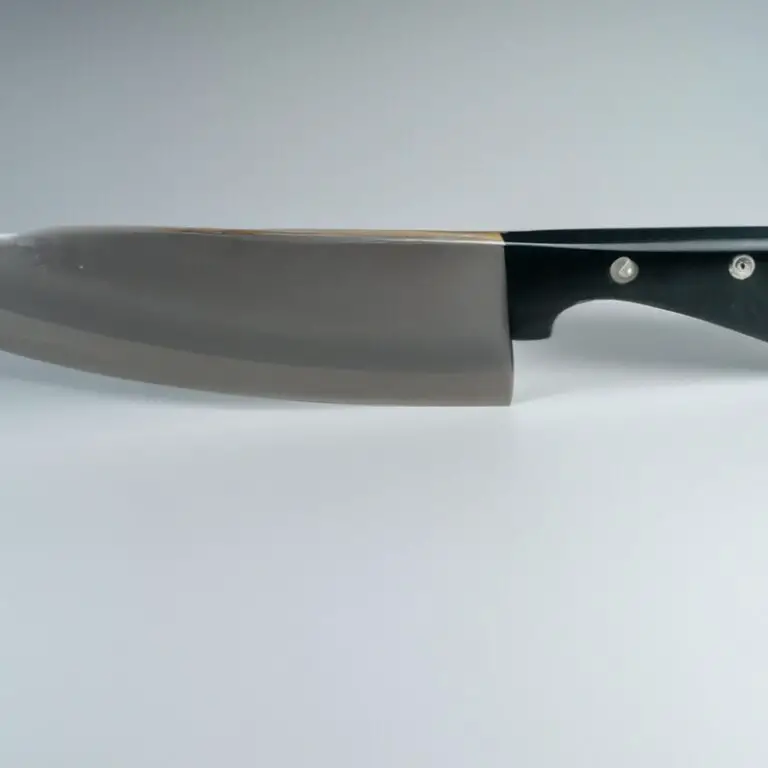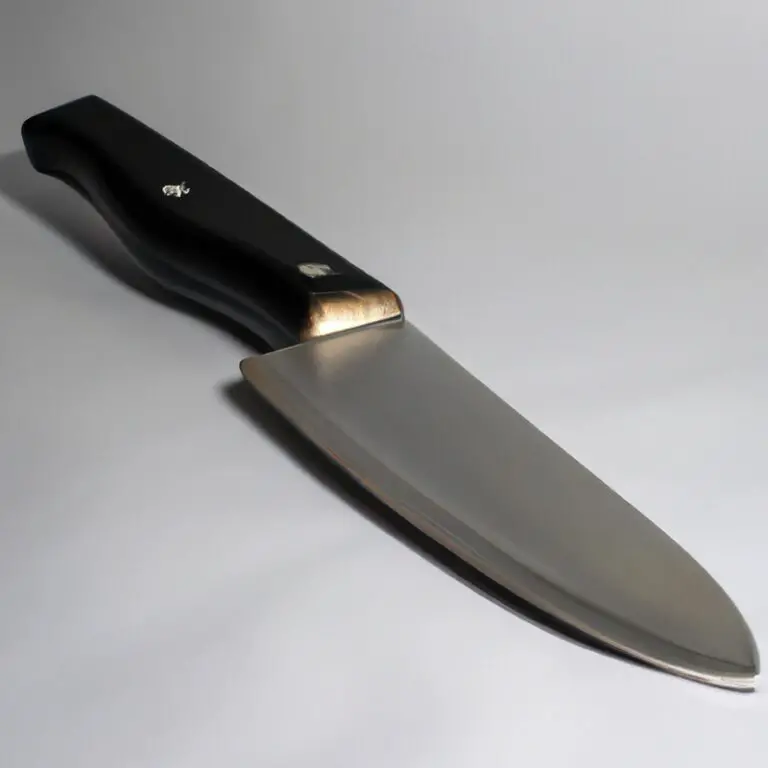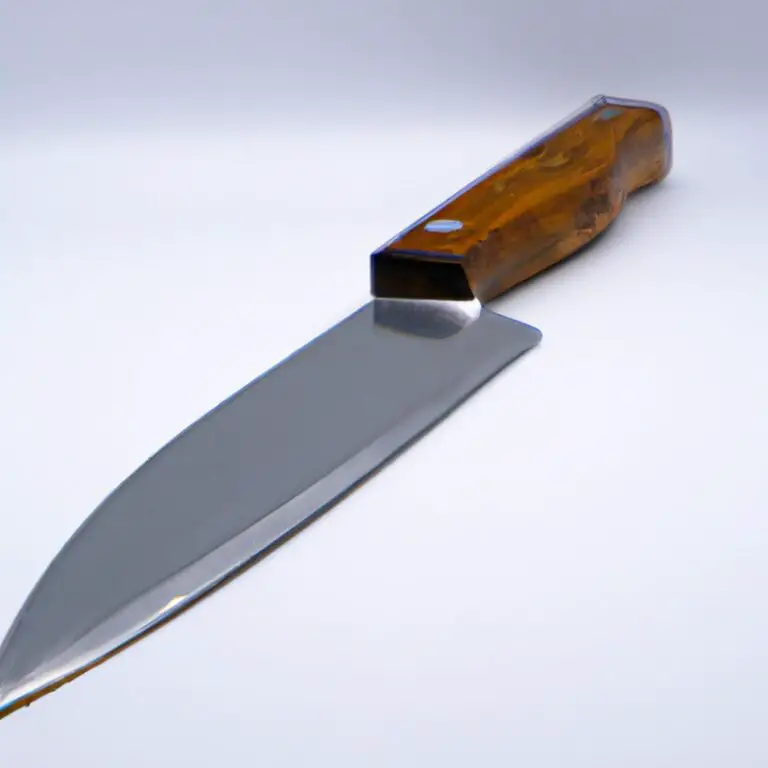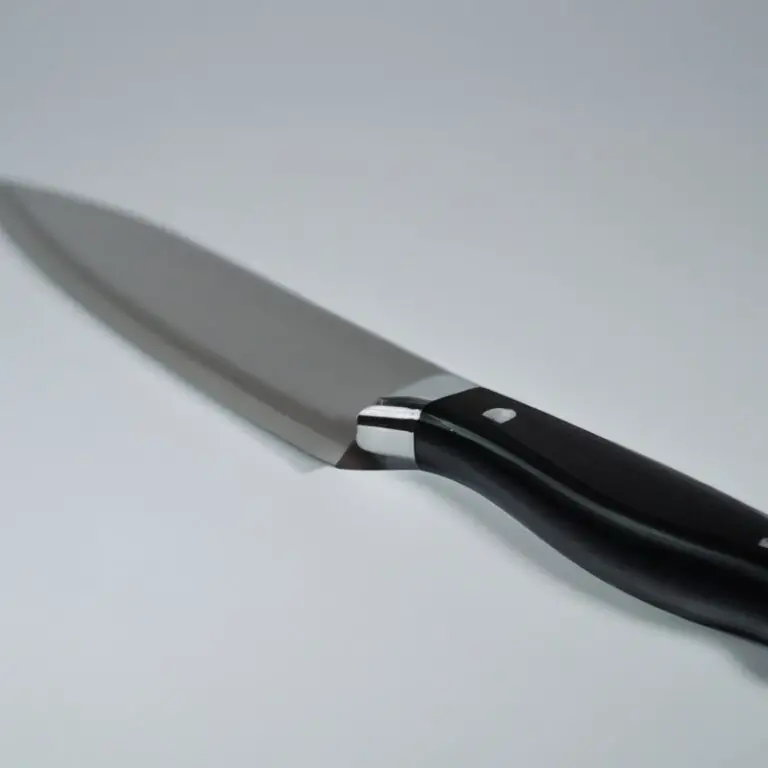What Is The Ideal Length For a Chef Knife Blade? Slice And Dice With Precision!
Key Takeaways:
- The ideal length for a chef knife blade ranges from 8 to 10 inches, depending on personal preference and intended use.
- A longer blade allows for efficient slicing and chopping of larger ingredients, while a shorter blade provides more control and precision.
- It is important to consider the weight and balance of the knife, in addition to the blade length, when choosing a chef knife.
- Ultimately, the ideal length for a chef knife blade is subjective and can vary based on individual needs and preferences.
Have you ever wondered about the perfect blade length for a chef knife? As a professional chef, I know how important it is to have a knife that’s both practical and comfortable.
In this article, we’ll explore the anatomy of a chef knife blade and examine the role blade length plays in selecting the right knife.
From the advantages of shorter blades to the benefits of longer ones, we’ll cover all the bases to help you find the perfect fit for your kitchen and budget. So, let’s dive in and discover the right blade length for your needs!
| Blade Length (inches) | Pros | Cons |
|---|---|---|
| 6-8 inches | Highly maneuverable Great for intricate and delicate tasks | Not suitable for larger tasks requiring more force |
| 8-10 inches | Versatile Good for most tasks, including heavier cutting and slicing | May feel heavy or unwieldy for some users |
| 10-12 inches | Efficient Longer blade allows for longer strokes, reducing fatigue | May be too large for some users or tasks |
Understanding the Basics: Anatomy of a Chef Knife Blade
A chef knife blade has three main parts: the tip, the edge, and the heel. The tip is the pointed end used for delicate tasks such as trimming, the edge is the sharp cutting edge used for slicing and dicing, and the heel is the top part of the blade, used for heavy tasks such as cutting through bone.
The blade’s spine is the thicker non-cutting edge opposite the blade’s edge, and it provides weight and balance to the knife.
The tang is the part of the blade that extends into the handle, providing stability to the knife. The bolster is the thick junction between the blade and the handle that adds balance, protects the fingers, and helps to maintain the blade’s sharpness.
Understanding the anatomy of a chef knife blade is essential to selecting the right knife for the job and maintaining it properly.
Knife Blade Length and Its Role in Chef Knife Selection
Choosing the right blade length is an important factor when selecting a chef knife. Longer blades are best for cutting larger items while shorter blades are ideal for precision tasks like garnishing.
A common blade length for a chef knife is 8 inches, but there are options available in varying lengths from 6-10 inches.
It’s important to select a knife length that is comfortable for you to handle and suits your specific kitchen needs. Ultimately, the ideal blade length for a chef knife is a personal preference that will depend on the user’s experience, skill level, and intended usage.
The Importance of Balance: Why Blade Length Matters
The balance of a chef knife is crucial in achieving optimal performance. Blade length affects the balance of a knife, and it is essential to choose a blade length that balances well with the handle.
Short blades are ideal for tasks that require precise control and agility, while longer blades are more suitable for heavy-duty tasks.
A balanced knife ensures effortless and comfortable cutting, reducing the risk of hand fatigue and injury. When selecting a chef knife, consider your specific needs and preferences.
Experiment with blades of different lengths to find the ideal balance and comfort that works for you.
Comfort in the Kitchen: Choosing the Right Blade Length for You
Comfort in the Kitchen: Choosing the Right Blade Length for You When it comes to choosing the right blade length for a chef knife, comfort in the kitchen should be the top priority. A smaller blade between 6-8 inches may be more comfortable for those with smaller hands or those who prefer a lighter-weight knife.
A larger blade between 10-12 inches may be more comfortable for those with larger hands or those who need to cut through larger items.
Consider the tasks you typically perform in the kitchen and choose a blade length that will provide comfort and efficiency for those tasks. Keep in mind that a longer blade may be better for slicing and dicing, while a shorter blade may be better for precise cutting.
Ultimately, the right blade length for you depends on your personal preferences and needs in the kitchen.
Take the time to test out different sizes before making a decision and invest in a high-quality knife that will provide comfort and efficiency for years to come.
Short and Sweet: The Advantages of a Small Blade Length
Small blade lengths for chef knives have their advantages, including greater control and precision in chopping and cutting tasks. A shorter blade also means less strain on the wrist and hand, making it ideal for people who do a lot of cutting in the kitchen.
Additionally, small blade lengths are better suited for intricate tasks, such as peeling or cutting small vegetables and fruits, as they allow for better maneuverability and accuracy.
Knife handles fitting in larger hands may also benefit from a shorter blade length to ensure a comfortable grip. However, it is important to note that a small blade length may be limiting when it comes to larger cutting tasks such as meats and bigger vegetables, and longer blade lengths may be more appropriate in those situations.
The Goldilocks Effect: Finding the Perfect Blade Length for Your Needs
The Goldilocks Effect refers to finding the perfect blade length that is neither too long nor too short for your needs. A knife that is too long can be difficult to maneuver, while a knife that is too short may not be able to handle certain tasks.
The right blade length will depend on your personal preferences, cutting style, and the types of foods you prepare.
Shorter blades are ideal for precision work and small ingredients, while longer blades are better for larger items and heavier chopping. Consider the balance between blade length and handle length for a comfortable grip and easy control.
Ultimately, the perfect blade length for you will be one that feels comfortable in your hand and allows you to perform the tasks you need with ease and precision.
The Long Game: The Benefits of Longer Blade Lengths for Certain Tasks
Longer blade lengths offer a number of benefits for certain tasks in the kitchen. A longer blade provides more surface area, which allows for smoother and more precise cutting for tasks such as slicing meat or fish.
Longer blades also allow for easier rock chopping motion, perfect for those who favor slicing vegetables.
Additionally, a longer blade can make it easier to cut through thicker foods like squash or melon. However, longer blades may be less maneuverable and unwieldy for tasks that require more precision, such as peeling delicate fruits or vegetables.
In short, longer blade lengths offer advantages for certain tasks, but it is important to consider the specific needs of each individual in selecting the ideal chef knife blade length.
Beyond the Blade: How Knife Handle Affects Blade Length Preferences
The handle of a chef knife has a significant impact on blade length preferences. A handle that is appropriately sized and shaped for the user’s hand makes it easier to control the blade, increasing overall precision.
Handles made of high-quality materials also provide better grip, decreasing the risk of accidents.
When selecting a chef knife, consider the handle material and design in conjunction with the blade length to ensure a comfortable and safe cutting experience.
Maneuvering Matters: How Blade Length Affects Knife Precision
Blade length plays a crucial role in knife precision. Shorter blades are easier to maneuver and control, making them ideal for delicate tasks like peeling and paring.
Longer blades are better suited for heavier duty tasks like slicing and chopping because they allow for longer strokes and smoother cuts.
Chasing precision requires a careful balance between blade length, handle design, and overall weight distribution. Ultimately, the ideal blade length depends on the user’s comfort level and the tasks they need to perform regularly.
It’s important to choose a blade length that feels comfortable in your hand and allows you to work with agility and precision.
The Right Tool for the Job: Matching Blade Length to Different Cutting Tasks
The right blade length for a chef knife depends on the cutting task at hand. Shorter blades, typically ranging from 6-8 inches, are ideal for tasks that require precision and control, such as peeling, deveining, or trimming.
Medium-length blades, usually around 8-10 inches, are versatile and suitable for a variety of tasks, including chopping, slicing, and mincing.
Longer blades, around 10-12 inches, are best for tasks that require lengthier strokes, such as carving, filleting, or breaking down large cuts of meat. It’s important to match the blade length to the task to ensure optimal performance and safety in the kitchen.
Using a blade that’s too short or too long for a particular task can result in poor control, uneven cuts, and potential injury.
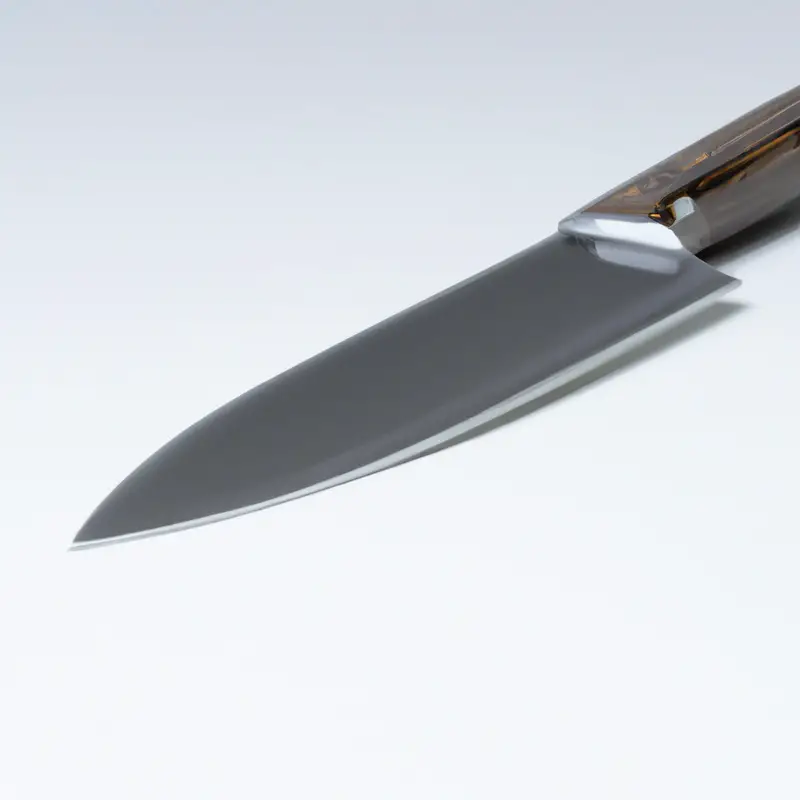
Sharpening and Maintenance: Blade Length Considerations
When it comes to sharpening and maintaining your chef knife, blade length plays a role in the process. Longer blades require more frequent sharpening due to a larger surface area, while shorter blades may not need as much attention.
It is important to keep the blade sharp to ensure efficient and safe cutting.
However, be cautious when sharpening as removing too much metal from a blade can decrease its lifespan. When considering maintenance, blade length should be taken into account to determine the necessary frequency of sharpening and the appropriate techniques to use.
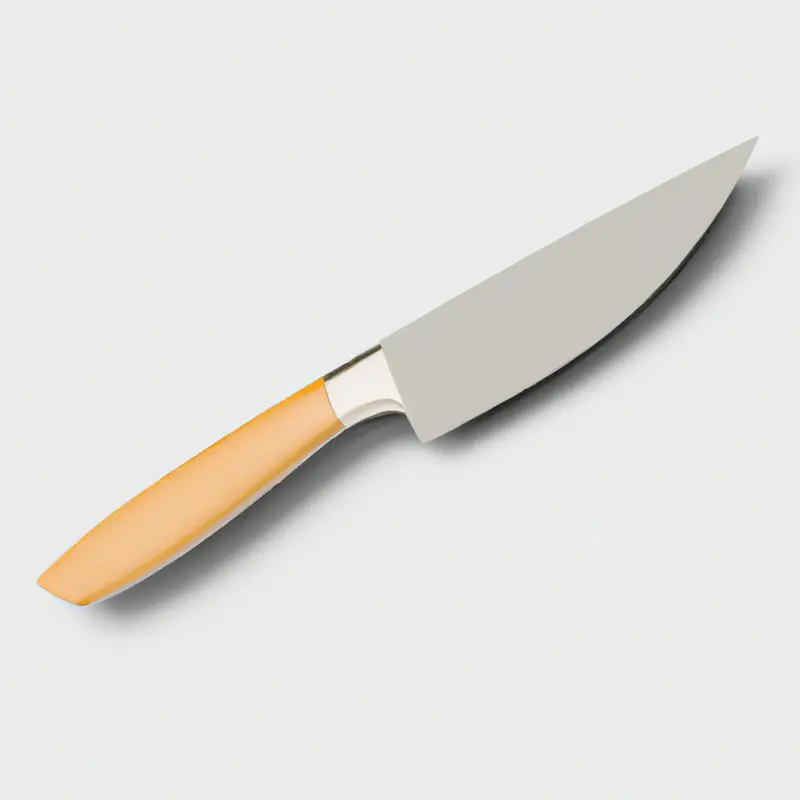
Investment vs. Practicality: Deciding on the Right Blade Length for Your Budget
Investment vs. Practicality: Deciding on the Right Blade Length for Your Budget When it comes to choosing the right blade length for your chef knife, it is important to consider your budget.
Longer blades are often more expensive due to the added material and craftsmanship required to create them.
However, longer blades are ideal for heavy-duty cutting tasks and can be a wise investment for professional chefs who need durability and precision in their knives. On the other hand, a smaller blade length may be more practical for those on a budget, especially for home cooks who do not require the same level of precision and durability.
Smaller blades are also more versatile and can be used for a range of cutting tasks.
Ultimately, the decision between investment and practicality comes down to individual preferences and needs. It is important to consider your budget, cutting needs, and skill level when choosing the right blade length for your chef knife.
Final Verdict
Choosing the ideal blade length for a chef knife is crucial for achieving optimal performance and comfort in the kitchen. Through understanding the anatomy of a chef knife blade, the role of blade length in selection, and the importance of balance and maneuverability, we can make informed decisions when it comes to the right tool for the job.
Whether you prioritize precision and control with a shorter blade or the benefits of longer blade length for certain tasks, it all comes down to personal preference.
Above all, maintaining and sharpening your blade is essential to prolonging its lifespan and performance. At the end of the day, investing in a quality chef’s knife that fits your budget and preferences is an investment in your culinary craft.
With this knowledge, you can confidently choose the ideal blade length that best suits your needs and elevate your cooking experience.

